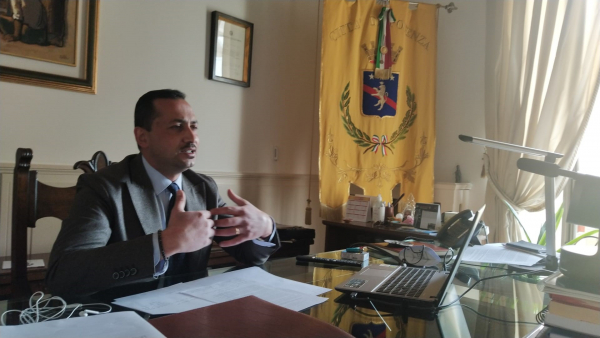
ECR Member and Mayor of Potenza, Mario Guarente, is the European Committee of the Regions rapporteur for the Directive on the resilience of critical entities. This directive will replace the old legislation on critical infrastructures of 2008. With a view to discussing some specific aspects of the directive and holding an exchange of views on the guidelines for drafting the opinion, a debate was organised with Committee members belonging to the NAT commission (Commission for Natural Resources).
Mr Guarente shared his proposals and vision with Michal Šimečka MEP (tasked with preparing the European Parliament report), Lukas Mandl MEP (who is preparing an opinion on the topic in the Parliament), officials from the European Commission's DG HOME (the directorate which drew up the directive) and representatives of the Regional Office for Europe of the United Nations Office for Disaster Risk Reduction (UNDRR). An expert was appointed to assist Mr Guarente with the opinion: Professor Angelo Masi, a lecturer at the Università degli Studi della Basilicata.
At the seventh NAT commission meeting, the rapporteur explained that the proposal for a directive approved by the European Commission in December 2020 includes three major innovations: firstly, the implementing provisions have been overhauled: the focus has shifted from the critical infrastructures themselves to the operators which manage them, defined as "critical entities"; furthermore, given the importance and potential strategic role of many, varied types of critical infrastructures, the proposal stipulates that the primary objective of protecting them from the natural and man-made risks to which they are exposed should go hand in hand with the broader objective of ensuring that they are sufficiently resilient; and lastly, regarding scope, the proposal adds another eight sectors to the two (energy and transport) covered by the 2008 directive: banking, financial market infrastructure, health, drinking water, waste water, digital infrastructure, public administration, and space.
The presence of infrastructure in a region, particularly critical infrastructure, is both an opportunity for driving local development and a risk should a disaster occur which could seriously harm people, the environment and the economy.
Therefore, although the bulk of legislation in this field is set at EU or national level, local and regional authorities do have major tasks and responsibilities with regard to protecting the area in which they are located. Accordingly, they must play a specific and significant role in contributing to the resilience of the critical infrastructures located in their area, bringing their own knowledge and experience to bear.
The working document asks a series of questions with a view to discussing this role and providing general input to the framing of the new directive.
Most importantly, these questions seek to establish whether the members endorse the decision to expand the number of sectors covered and to involve the operators directly in order to guarantee that the operators themselves, not just the infrastructures, are sufficiently resilient.
The working document also asks what specific role could be played by local and regional administrations and what steps could be taken to ensure coordination and collaboration between the various levels of governance and the various local administrations on whose patch a given infrastructure is located.
The opinion will be discussed at the NAT commission meeting on 20 May. As Mr Guarente pointed out, this meeting will be preceded by a series of hearings with stakeholders.


 TAG: Social
TAG: Social